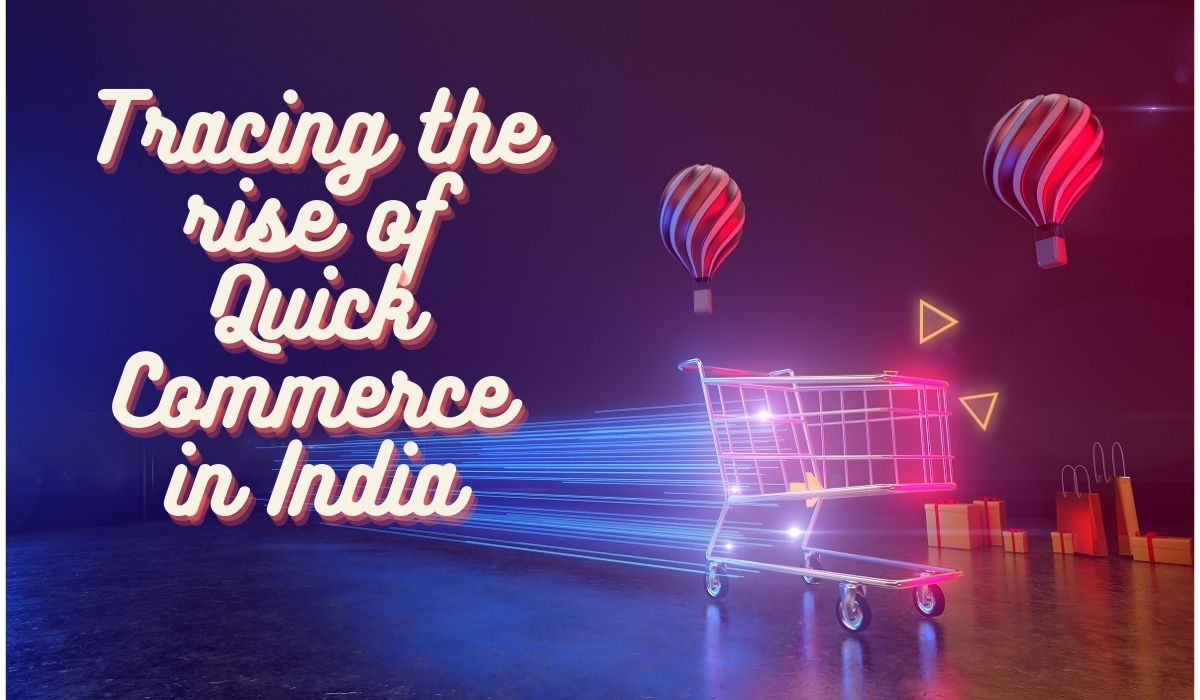Quick Commerce – the result of fast-evolving retail commerce – is a newly forged subsegment gaining traction on the back of COVID-induced lockdown and work-from-home mandates. This feature explores the rise of Quick Commerce in India while highlighting the factors driving its growth, its expansion across geographies and segments, the potential use of drones to further enhance the operations, and much more.
Going back in time, if you remember, Domino’s Pizza deployed its most intriguing marketing strategy, “30 mins delivery or Pizza free” which stayed as the backbone of the food chain’s rapid growth across nations for a very long time. It was astonishing how we could get food on our doorstep in only 30 mins. This concept which was once used as a USP by a restaurant chain has now emerged as a whole new segment for retail commerce, as e-commerce brands consistently look for ways to cut delivery times.
Evolving from a self-service superstore – such as Walmart, More, etc. – to delivery in two to three days from online marketplaces – such as Amazon and Flipkart – retail commerce has now entered into its third and most evolved generation of delivering items (sometimes with a nominal delivery charge) within a span of 45 minutes – known as quick commerce or q-commerce.
Earlier, used by the takeaway food outlets, this quick delivery mechanism has now transpired into the grocery category and the change in consumer behaviour, induced by Covid-19 pandemic, has only accelerated this trend.
The market penetration of Quick commerce is estimated at USD $~0.3 Bn in CY2021 and is expected to grow 10-15x in the next 5 years, that is $5 billion by 2025, says the latest report ‘Quick commerce: A $5 billion market by 2025’ launched by homegrown consulting firm RedSeer.
Speaking of India, 20 million households are addressable by quick commerce in India with an estimated addressable market size of USD $~50 Bn in 2020, the report said.
BUT WHAT IS DRIVING THIS SPECTACULAR GROWTH OF THE NEWLY FORGED SUB-VERTICAL?
Quick commerce which is the natural evolution of e-commerce is the result of changing lifestyles and consumer behaviour. Covid-led change in consumer behaviour towards using online as a replacement for Kirana, and the growing importance of speed and convenience are driving the segment’s growth.
“Major drivers of the segment have been the pandemic and the current situation. People have got accustomed to the current ecosystem. It’s all about convenience and comfort, cost is secondary.”
~ Ashish Chadha, Co-founder and CEO APAC, XPDEL
There is an increased affinity of online and Gen-Z customers towards top-up and indulgence purchases – currently accounting for two-thirds of India’s consumables spend which is driving the segment. In addition to this, the rising unplanned online ordering behaviour from metro and tier I cities is also a contributing factor in the rise of the segment. Currently, 13% of the online transacting households are “Quick Commerce” addressable and they spend USD 50 Bn on top-up and unplanned purchases.
“Quick Commerce is emerging as one of the fastest-growing e-commerce models serving the need for faster delivery among convenienceseeking customers. With high fill rates and 30- 45 mins delivery service for unplanned orders, mid-to high-income households in metros are increasingly replacing traditional kirana ith quick commerce platforms like Swiggy’s Instamart and Dunzo.”
~ Mukesh Kumar, Engagement Manager at RedSeer
Quick Commerce provides more convenience to customers with its curated selection of products, instant and doorstep delivery. Unlike traditional e-Grocers, Quick Commerce platforms have simple UI and Instant delivery. It reduces the Inconvenient caused by offline transactions due to poor transport and unavailability of selection.
All these factors are making the segment popular among people and driving its growth, which has resulted in quick-commerce expanding through geographies and segments Now that we have established the expected growth and the driving factors of the segment, it is only fair to explore the expansion of the sub-vertical both in terms of segment and geography.
In these recent times, it has been observed that demand from tier II and III cities have derived exceptional growth for the e-commerce segment even amid the pandemic.
While the penetration of e-commerce in tier II and III have increased especially during the pandemic, the rise of quick commerce in the area is debatable.
“In the near term, we don’t expect quick commerce services beyond Metro and Tier-1 cities,” says Kumar. Contradictory to his opinion, Mr Chadha asserts that quick commerce tapping beyond metros is only obvious. “Of course, quick commerce will tap beyond metros and get into tier II and III cities. That is why we are here- to help companies do the ultra-quick deliveries and reach to the smaller cities,” he says adding that quick-commerce companies are more focused on customer acquisition and density. “Where there is the density of people willing to buy, companies will expand, however it may be confined to certain zip codes,” Chadha said explaining that companies are not defining delivery areas based on tier II and III but the number of orders.

Let us fulfill your customers’ needs
and deliver them your products while we open new Sales channels and Marketplaces for you.
